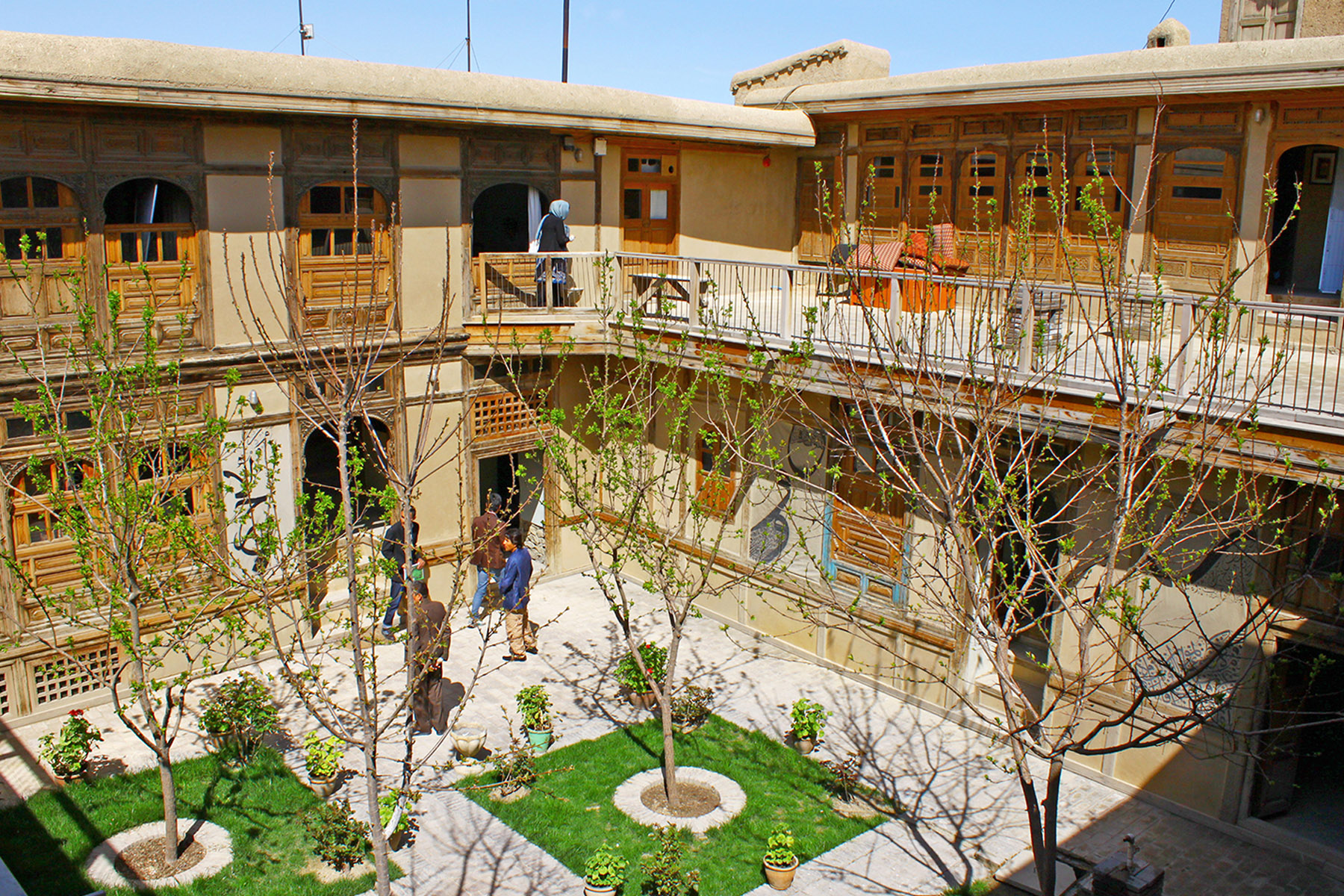Turquoise Mountain (a charity which hosts INTBAU’s Afghanistan Chapter) will be partnering with the Freer|Sackler Galleries, the Smithsonian’s museum of Asian art, to shed light upon an Afghanistan that many do not see. The exhibition will bring audiences into direct contact with Afghanistan’s rich artistic history, influenced over the years by its crucial position on the Silk Road and the Persian, Indian, and Central Asian traditions that have passed through Afghanistan over the centuries. Turquoise Mountain will also allow audiences the chance to connect face-to-face with the young artisans who now carry these traditions forward, fighting to preserve their heritage in an environment plagued by conflict. Turquoise Mountain’s work began in 2006 with the renovation of Murad Khani, the old city of Kabul.
Murad Khani was previously a beautiful historic area, home to the ‘Qizilbash’, who from the eighteenth century onwards had formed the inner circle of the rulers of Kabul. Situated on the north bank of Kabul River, the area had once been the heart of the community. There was a bazaar, orchards nearby, and stables for the horses of wealthy Kabulis. At the city centre were elaborate courtyards, fashioned from carved cedar columns and panelling. Decades of war resulted in Murad Khani falling into ruin, and the advent of widespread poverty. Many historic buildings were buried under meters of refuse, obscuring existing structures, and under a 1970s East German master plan for Kabul, the area was slated for demolition and redevelopment. Turquoise Mountain employed over 900 individuals, including members of the community, and cleared out over 30,000 cubic metres of waste, revealing whole buildings made of mud walls and cedar woodwork.
In addition to renovation and reconstruction efforts, Turquoise Mountain built a primary school, which provides education to 140 children per year, and a clinic, which serves 18,000 patients per year, 75% of whom are women. These endeavours are run on a charitable basis, with patients at the clinic paying only what they can afford, even if that means paying nothing at all.
The Turquoise Mountain Institute drives the content of the upcoming exhibition at the Freer|Sackler Galleries. Every year passionate young Afghans come to the Institute to learn, studying to be artisans in one of four disciplines: jewellery, woodcarving, ceramics and calligraphy. They are taught by Master Artisans, individuals known for being the most skilled in Afghanistan in their crafts. Alongside these artistic disciplines, the students are also taught a range of business development skills, to ensure that they graduate fully equipped to start their own businesses, selling their products to both local and international markets.
The artisans, both young and old, have worked tirelessly over the last few months to produce a spectacular, and unprecedented display for the Freer|Sackler Galleries. An Afghan caravanserai will be reconstructed in its entirety, and each of the four crafts will be laid out from start to finish, with artisans for each of those crafts in attendance to answer questions, and provide true insight into daily life in Afghanistan.
Turquoise Mountain hopes that the exhibition will inspire both audiences and artisans alike, with stories and reactions that show Afghanistan is a complex land filled with instances of hope, wonder, and ultimately beauty.
Turquoise Mountain: Artists Transforming Afghanistan will be on view from March 5, 2016 to January 29, 2017 at the Smithsonian’s International Gallery in Washington, D.C.
